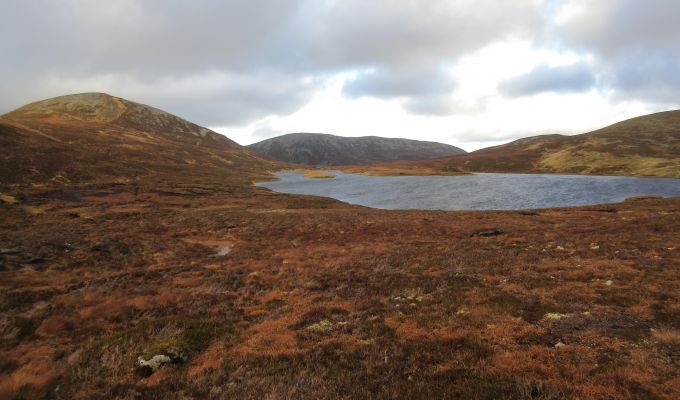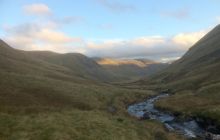ROARING STAGS, DARTING HARES AND THE LAST DAYS OF AUTUMN
ANOTHER day on the mountains, another day of being buffeted and battered by this seemingly never-ending cycle of high winds.
Yet strangely it felt as though a corner has been turned. There was a definite change in the air. It’s that moment when the seasons are neither one thing nor the other, when they seem to be holding their breath to decide on the next move.
The autumn colours are still in fashion, the chill on the high tops only came courtesy of the gusty conditions. Down in the glens, a benign temperature gives no hint of any coming winter sting, and the bellowing of the stags continues to cut through the silence like chainsaws. But there is a mood swing.
The hares are already halfway there, flashes of white signalling the arrival of their winter coats, and, roaring stags aside, the hills are quieter, the number of walkers dropping off. The school holidays are over, there is less traffic on the roads, and rural hotels, hostels and pubs start to rein in their opening hours.
The ice axe and crampons haven’t yet made an appearance but the rest of the rucksack has been given a winter makeover; survival shelter tucked in a side pocket, head torches primed and spare batteries at the ready, heavier layers on standby.
It was one of those days when you are surprised to meet anyone else on the hill. Maybe that was down to the choice of walk, a long horseshoe trek around three Munros to the north-west of the Spittal of Glenshee.
Glas Tulaichean and Carn an Righ are usually climbed together, and with shorter daylight hours they demand a certain level of commitment. Throw in Beinn Iutharn Mhor as well and the clock is ticking.
Few would rank these high in the list of their favourites, but what these mountains may lack in terms of aesthetic beauty, they more than make up in size and space. These are big, sprawling hills, heavily muscled and with an acute sense of emptiness.
Carn an Righ – the cairn of the king - feels a long way from anywhere, a haughty royal surveying its realm, peering down its nose at the peasantry. Sitting at its summit cairn, you realise just far into the centre of this beautiful desolation you have travelled.
It comes as a surprise to many that the bulky neighbour which dominates the view to the south-west is Beinn a’ Ghlo, a mountain usually accessed from points up the A9. Beinn Iutharn Mhor looks a big beast from here, but it is worth taking in, a better bet than the usual combination with Carn Bhac which involves a tortuous bog trot.
The feeling of space merely increases as you head between the two, the empty quarter of the the Geldie stretching to the horizon where the big Cairngorms are lined up.
The main difficulty of the next ascent came courtesy of the strengthening wind being funnelled through the gap, forcing us to batten down at times just to remain upright. The consolation was an almost surreal picture, a whole mountainside of copper tufts of grasses dancing frenetically in a perfect Hula formation.
We reached the cairn in a squall of drizzle, the surrounding high points silhouettes amid the sweeping curtains of grey and occasional shafts of light pinpointing the contours.
The route out takes the walker to the beautiful and lonely Loch nan Eun. On a calm day, this is the centre of a cacophony of bird cries but the only sound we heard was the whistle of the wind, the only movement a constant blown ripple across the waters.
The drop down Gleann Taitneach completes the horseshoe, a long descent into darkness, the noise of the stags increasing with the dying light. It sounded like their last hurrah, and the last days of autumn.

